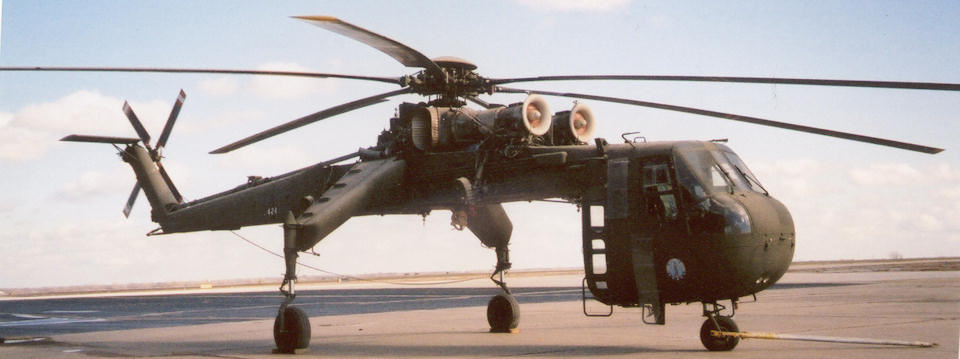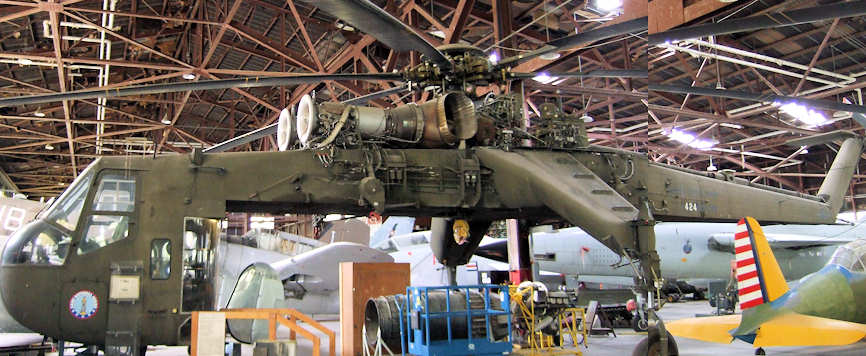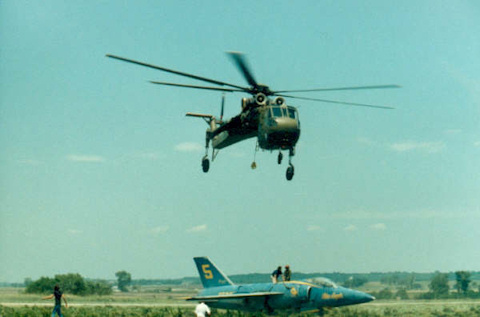The
CH-54 was produced in two versions; A and B. The Museum’s
Tarhe is an A version, one of at least 54 built. Tarhe is a Wyandotte
Indian word meaning “crane.” The Skycrane was first flown
in 1962. It was initially designed as a military heavy-transport helicopter.
Interchangeable rectangular box-shaped cargo pods allowed it to perform
many diverse jobs. The Skycrane has been used as a troop transport,
cargo transport, and missile transport. It has also been used to lay
mines, anti-submarine duties, and field hospital operations.
The pods were
fitted with communications, ventilation, and lighting systems.
Wheels were also installed to make moving them easier. A pod
could hold up to 45 fully equipped combat troops.
The
Skycrane proved itself a reliable workhorse during the Vietnam War.
It
saved the military approximately 210 million dollars by
retrieving more than 380 damaged aircraft. Tarhes were also
used as rotary-wing
bombers on several occasions, carrying and dropping 10,000
pound “daisy
cutter” bombs, used to create landing zones by flattening
just about everything within an area several hundred yards
in diameter.
We have little in the way of military records on our CH-54A. It is
serial number 67-18424, which tells us the helicopter was procured
with Fiscal Year 1967 funds. We also know it flew with the 137th Army
Aviation Group, Kansas Army National Guard at Forbes Field during part
of its military service.
The
Museum acquired the Tarhe on loan from the US Army as surplus federal
property in 1991. It was ferried to Forbes by a US Army crew
from Fort Indian Gap (Anneville), Pennsylvania in December of that
year. When
the Kansas Army National Guard, south of our Museum, used to fly
the CH-54,
they
transported three of the aircraft in the
Museum’s
collection to Topeka, the F11F-1 Blue Angel Tiger, the F-84F
Thunderstreak, and the F-86H Sabre.
Although no longer in US military service, many Skycranes fly commercially
in heavy lift service, forestry service, and as aerial firefighters,
hauling large buckets of water or fire retardant to a fire.
This
helicopter is on loan from the US Army Tank-automotive and Armaments
Command, Warren, Michigan





